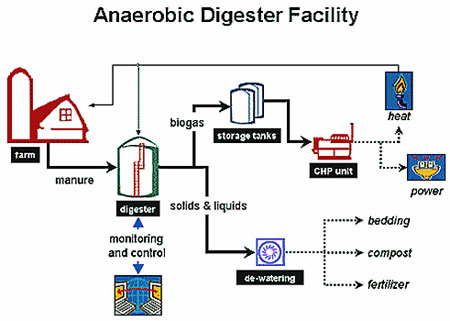Pacific Southwest, Region 9
Serving: Arizona, California, Hawaii, Nevada, Pacific Islands, Tribal Nations
Organics: Anaerobic Digestion
Benefits
Anaerobic digestion is the bacterial decomposition of organic waste in the absence of oxygen. The two main products of anaerobic digestion are biogas and a solid residual. Food scraps, manure, biosolids, and fats, oils, and grease (FOG) can all be digested.
Benefits of Anaerobic Digestion:
- Anaerobic digestion creates biogas, a renewable source of energy that can be used similar to natural gas.
- Food and other organic materials disposed of in landfills decompose to create methane, a greenhouse gas with a global warming potential 21 times higher than carbon dioxide. Diverting food scraps from landfills to digesters reduces methane emissions from landfills.
- Fats, Oil, and Grease (FOG) accumulate and can clog pipes and pumps both in the public sewer lines as well as in wastewater treatment facilities. Diverting FOG from the wastewater infrastructure to anaerobic digesters prevents combined sewer overflows, which protects water quality and saves money.
- Dairy digesters provide a management method for manure that improves water quality, reduces methane emissions from manure lagoons and storage ponds, and minimizes odor. Learn more about Region 9's Dairy Manure Collaborative »
- Using the solid residual as a soil amendment can reduce the need for chemical fertilizers, improve plant growth, reduce soil erosion and nutrient run-off, alleviate soil compaction, and help soil retain water.

